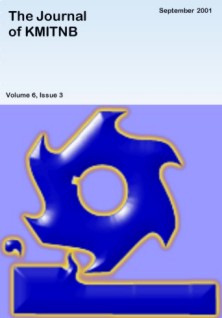ThaiScience
ThaiScience
THE JOURNAL OF KMUTNB
Volume 32, No. 04, Month OCTOBER, Year 2022, Pages 819 - 829
The use of aluminum dross in refractory materials from the recycling process of aluminum alloys
Krisana Poolsawat, Tanikan Thongchai, Narumon Seeponkai
Abstract Download PDF
This research studies an application of aluminum dross, that is solid waste from aluminum alloys recycling process. The main objective of this study is to obtain the benefit from waste material utilization. Basically, alumina is the main composition for producing high alumina refractory. In this research the aluminum dross was studied the primary chemical composition by using XRD and XRF techniques in order to monitor the alumina composition from aluminum dross. It was found that alumina is the major chemical composition with 81.6 wt% followed by silica with 5.6 wt%. The aluminum dross was mixed with alumina and silica (industrial grade) by using the ratio of 100 : 0 : 0, 80 : 10 : 10 and 60 : 20 : 20, respectively. The mixing powder were compressed at 4,000 lb/in2 and then all samples were sintered at 1300, 1350 and 1,400 degrees Celsius for 2 hours. The compressive strength, bulk density and thermal conductivity coefficient were analyzed. It was found that the sample with the aluminum dross : alumina : silica at the ratio of 80 : 10 : 10 sintered at 1300 degrees Celsius provided the value of the compressive strength, bulk density and thermal conductivity coefficient of approximately 54.3 MPa, 2.2 g/cm3 and 1.8 W/m.K, respectively. These values show the sample with the ratio of 80 : 10 : 10 is suitable for using as high alumina refractories, referring to standard of KB-50 refractory materials.
Keywords
Aluminum Dross; Waste from Recycling Aluminum Alloys; Refractory Materials; High Alumina RefractoryTHE JOURNAL OF KMUTNB
Published by : King Mongkut's University of Technology North Bangkok
Contributions welcome at : http://www.journal.kmutnb.ac.th
